Stirling: these are the most important Attractions
Stirling is the old royal city of Scotland. Decisive battles took place here and the key to the Highlands lay here. Its location and history make Stirling a great destination for a day out. Here are the most important attractions and information.
Contents: Top attractions | Old Town | City tour | Excursions
Stirling is a truly regal city, full of old houses, palaces and guarded by a majestic castle. Around 1500, Stirling was even the capital of the Scottish kingdom – even if it had to share this title with Edinburgh at the same time. However, during this time, the harbour town on the River Forth attracted busy merchants and noblemen who settled at the foot of the castle – such as the Earl of Mar and the Earl of Argyll.
Stirling was also a strategically important town in the Middle Ages. It guarded the River Forth, which ran deep into the hinterland, and the bridges that led over it into the Highlands. No wonder that several important battles took place in view of Stirling Castle: the Battle of Stirling Bridge and the Battle of Bannockburn.
This history and the still medieval charm make Stirling a beautiful destination for a visit to Scotland. Or even a good base for further excursions in the surrounding area.
Find out what sights and excursions there are here.
The most important attractions in Stirling
Stirling Castle
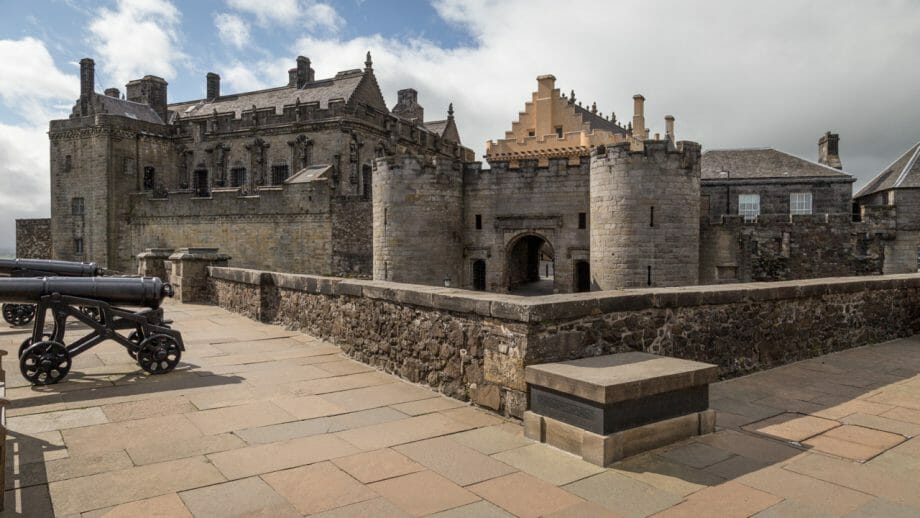
Scotland’s castle of destiny is Stirling Castle. Whoever held it could control the heart of the country – and more importantly, the country’s lifelines. This is because the River Forth flows here, providing ships with access to the hinterland and bringing Stirling great wealth as a harbour. On the other hand, one of the most important crossings over the Forth was located here. Stirling therefore combined wealth with a strategic military position. And all this was secured by the huge castle on its rock.
Stirling Castle is huge and if you want to visit it, you should set aside a few hours. In addition to restored rooms, opulent tapestries and sweeping views, there are also actors who bring the people of the past back to life in the present.
The Old Town Jail
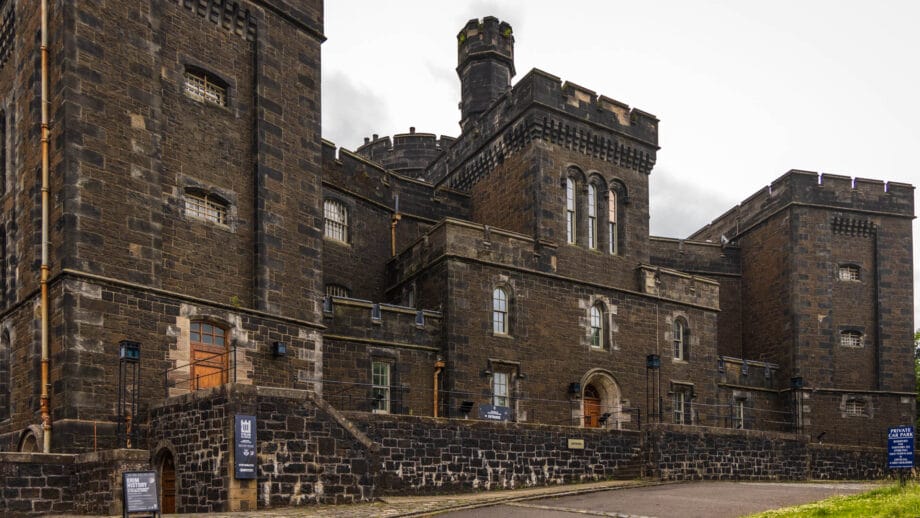
As dark as the building may seem, the Old Town Jail was a milestone in the penal system at the time. Until the middle of the 19th century, offenders were sent to Stirling Tollbooth. The conditions there were terrible. And this attracted the attention of Frederick Hill, the Inspector of Prisons at the time. At his instigation, this new and modern prison was built. Today you can book a tour with re-enactment or – very exciting – an escape room experience.
Church of the Holy Rude

There are only two churches left in the United Kingdom where British kings were crowned: St Paul’s Cathedral in London and the Church of the Holy Rude in Stirling. It was here that James VI, son of Mary Queen of Scots, was crowned in 1567. He soon also ruled England as James I. Inside the small cathedral, you can marvel at the architecture and stained-glass windows. There is an old cemetery between the church and the castle.
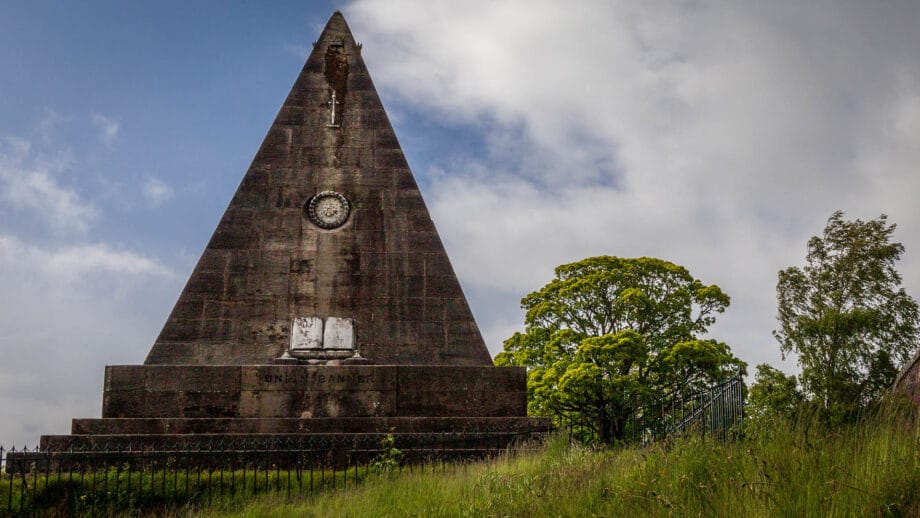
Here you can see, for example, the statues commemorating the dead Covenanters or the Star Pyramid, which is dedicated to all those who are persecuted in the name of their religion. There is also a wonderful little lookout point on a rock.
Cowane’s Hospital

This building was erected by 1637 by the wealthy merchant John Cowane. Its purpose was to help the sick and poor. It stands right on the doorstep of the Church of the Holy Rood. It has only recently been extensively restored. Although it cannot be visited inside, a look from the outside shows the oldest houses in Stirling, as was typical of towns in the late Middle Ages. Next door is one of the oldest bowling greens in Scotland. It was laid out as early as 1712.
Argyll’s Lodging

This manor house right at the foot of the castle was built in 1630 in the Renaissance style and was intended to accommodate royal guests. The landlord was the Earl of Argyll, who had the interior beautifully decorated. Normally, admission to Argyll’s Lodging can be paid for with the Stirling Castle ticket. However, the house is currently being renovated, so it can only be admired from the outside.
Other attractions in the old town
There are many houses in Stirling that are not museums, but nevertheless represent a part of the city’s rich history. It’s up to you to decide whether you want to visit them on purpose on the tour described below or stumble across them by chance. But here is the information:
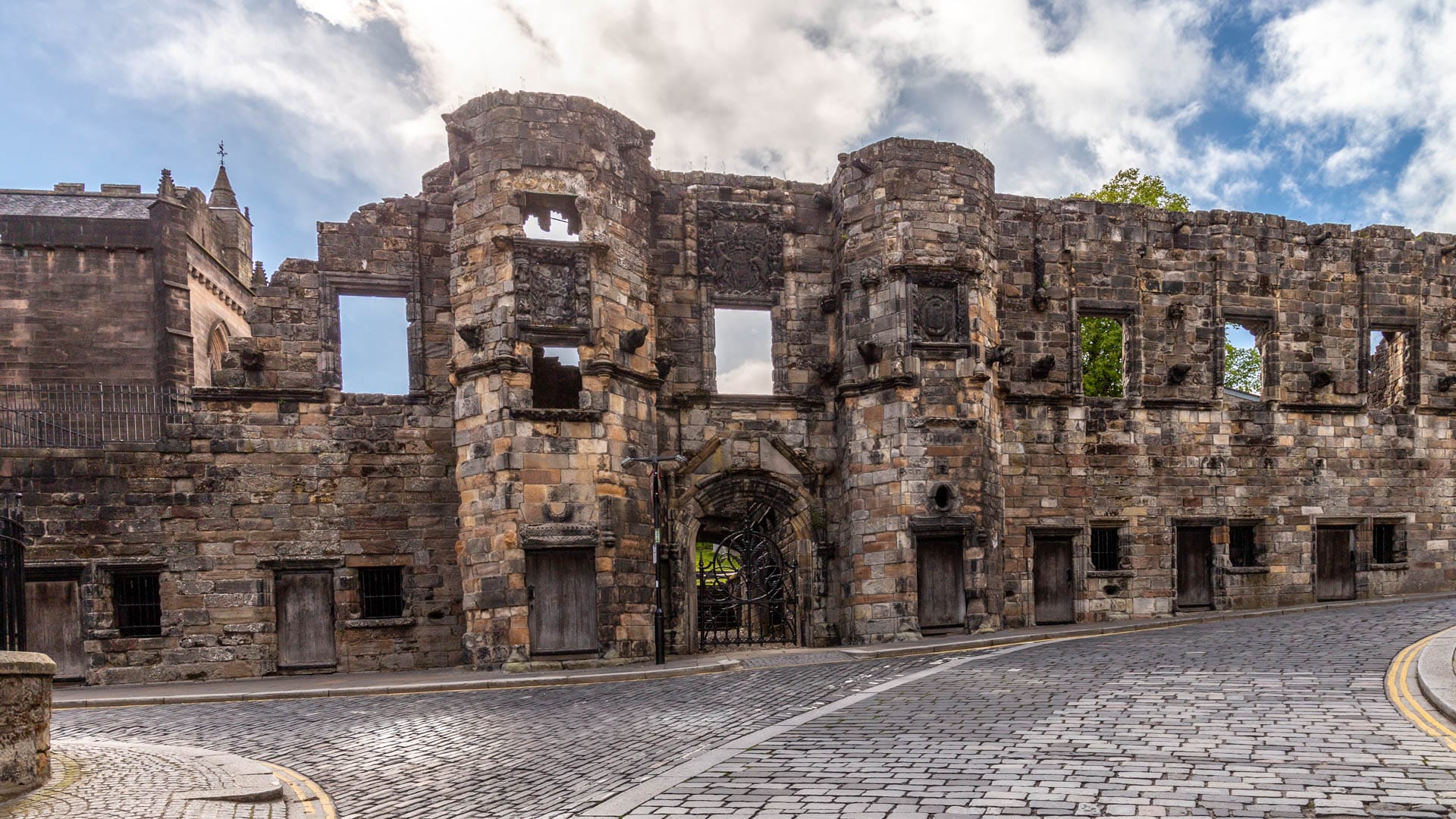
Mar’s Wark
John Erskine, Earl of Mar built this impressive renaissance house by 1570 and today only the façade remains.

Mercat Cross
In front of the Tollbooth stands the old market cross with a sitting unicorn on a pillar.

Athenaeum
Built around 1816, this neo-classical building served as a clubhouse for merchants. Today it is a listed building at the head of King Street.

Cannons
There are two cannons near the Mercat Cross. They date back to the Napoleonic Wars and were given to the city in 1904.
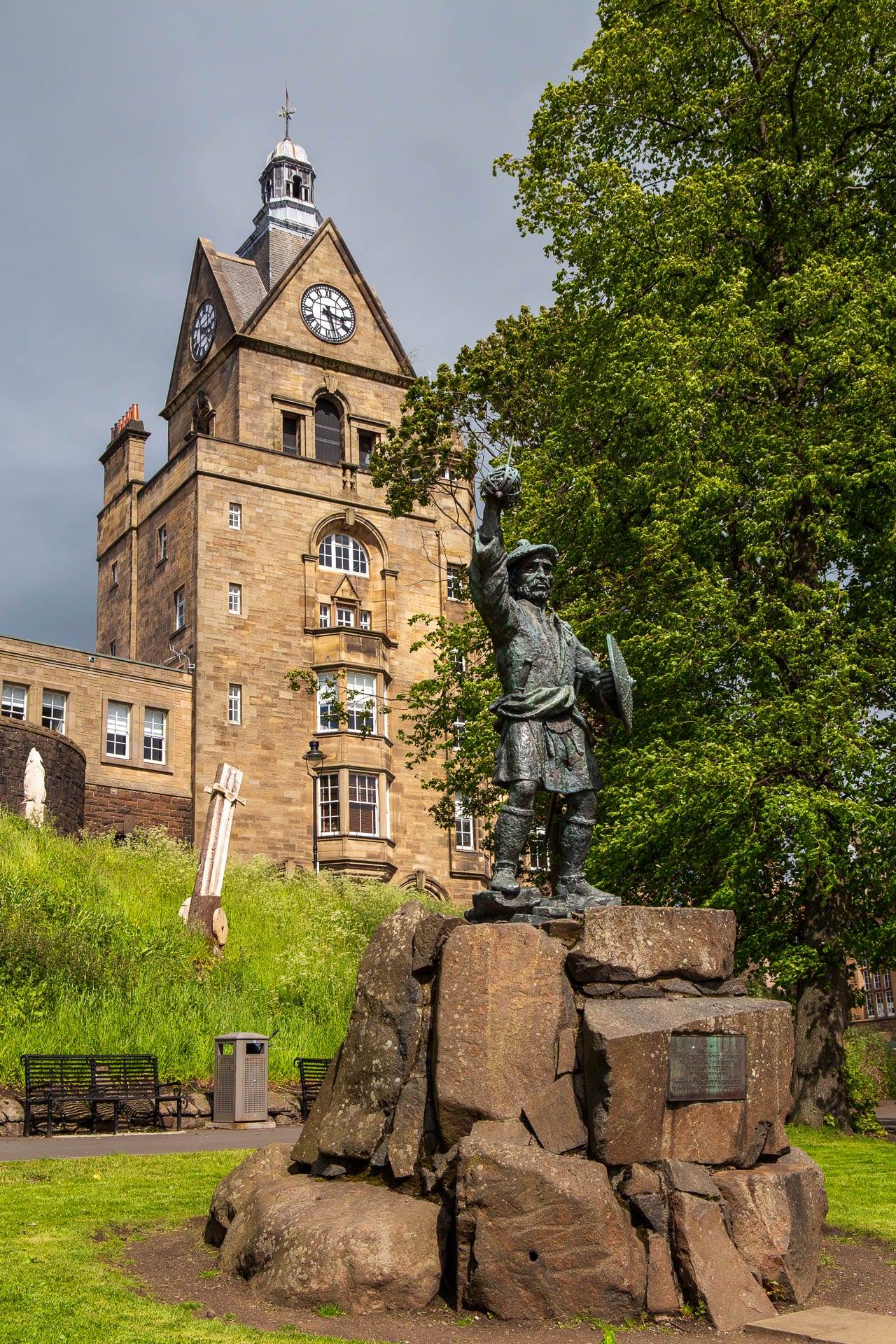
Rob Roy
The statue below the Municipal Building on Corn Exchange Road was donated by Adam McGregor Dick in the middle of the last century.

Municipal Buildings
Construction of this building, which served as the town hall, began in 1914.
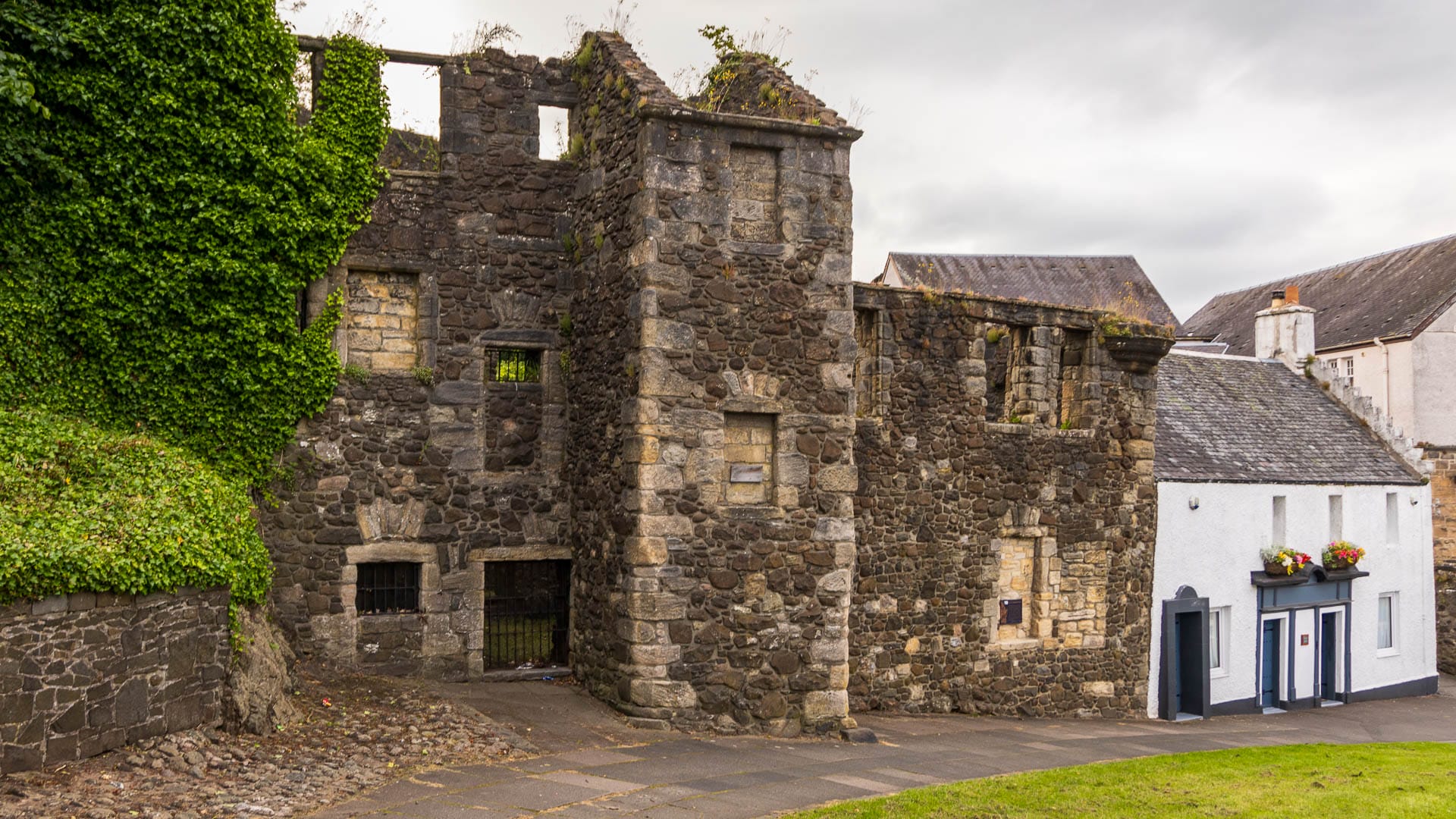
Cowane’s House
Stirling’s wealthy merchant had one of his houses here in the 17th century.

Drill Hall
The Victorian house with two towers was completed in 1892 and served as a base for the 4th Stirlingshire Volunteer Battalion.
Walk through the city as a day trip
An extended walk through the old town gives you a good feel for Stirling. The walk takes about an hour. However, you should allow enough time for sightseeing.
We start at the top of the castle car park. Here you can see the castle directly, which can take a few hours. We then walk down Castle Wynd from the car park and take a look at Argyll House.
Further down the road on the left is Mar’s Wark Palace. Turn into Broad Street here, towards Mercat Cross, which is opposite the Tollbooth . A little further on – by the bagpipe shop – are the two cannons.
Turn left onto St Mary’s Wynd. A little further on is John Gowan’s House. Take the next right into Irvine Pl – we walk down it to Barnton Street. Turn right here. On the right-hand side we soon reach the Curly Coo Bar, one of the best whisky bars in Stirling. Either have a pint here or take a quick look up Princes Street to see the Drill Hall .
Return to Barnton Street and continue until Friars Street turns off to the right. This shopping street has at least two interesting shops: the record shop “Europa Music” and the antique shop “Abbey Antiques”.
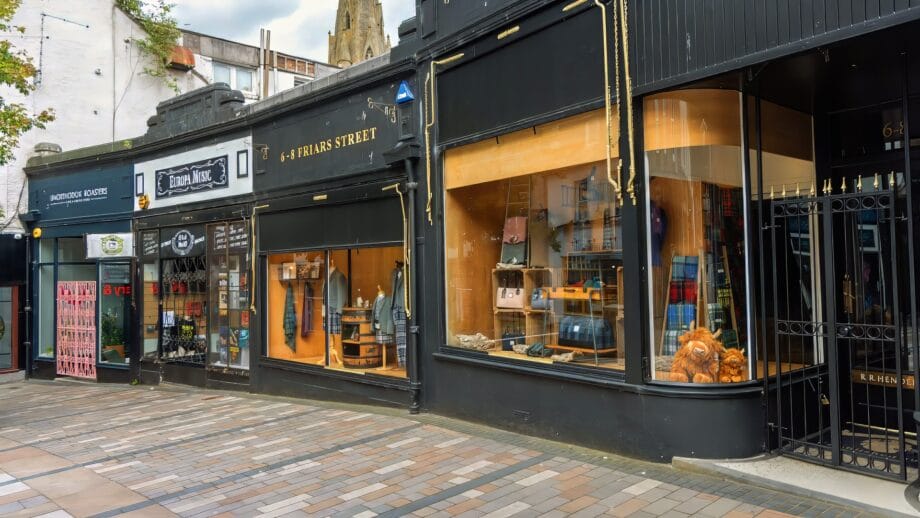
Friars Street ends at the side of the Atheaneum. If we walk around the tower once, we come down to Corn Exchange Road, pass the Municipal Buildings and walk down to the Rob Roy statue. We then turn round, walk back up and turn into Spittal Street in front of the Atheaneum.
The street now climbs and we pass many historic houses.

Spittal Street becomes St John’s Street and the passage to the Old Town Jail is now on the left. If there is still time, we can take a guided tour here. We then continue along the street and immediately turn left again behind the Church of the Holy Rude. Opposite is Cowane’s Hospital.
From there we can go directly to the cemetery and look at the old gravestones. On the left, a staircase leads up the rock to the viewpoint. We then head towards the Star Pyramid. Finally, we look for the stairs that take us back to the castle car park.
Excursions: What’s close to Stirling
Stirling can also be a good base for excursions. Here are some places of interest nearby:

National Wallace Monument
Observation tower commemorating the national hero William Wallace. The exhibition shows information about the history on several floors. At the top, you get a panoramic view of Stirling and the Highlands.

Battle of Bannockburn Visitor Centre
The battlefield where the legendary King Robert the Bruce fought for Scotland’s independence from England. A 3D multimedia show explains the history of this important victory.

Doune Castle
This castle is a film star: it featured in Monty Python’s “Knights of the Coconut”. More recently, however, it became famous through the TV series “Outlander”, where it played Castle Leoch. The audio tour picks up on both film events.

Bridge of Allan Highland Games
The Highlands Games are held once a summer in the nearby village of Bridge of Allan. A big event in the shadow of the Wallace Monument, where musclemen and graceful dancers compete.